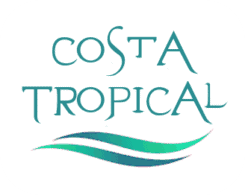- Home
- Listings
- Things To See & Do
- Car Hire
- News
- Properties
- What’s On
ES
Museums in Granada
Top museums in Granada
La Alhambra Museum
Housed in the Palace of Carlos V, within the Alhambra, this museum contains outstanding Hispano-Moorish works of art from the 9th to the 16th centuries, including ceramics, wood, plaster, and metals. In addition, there is a section of Oriental Moorish art. The collection is mainly originating from excavations and restorations carried out within the Alhambra itself, so its visit is an ideal complement to that of the Monument itself.
Open: Summer (April 1st through October 14th): Wednesday to Saturday 8:30am to 8pm. Tuesday and Sunday 8:30am to 2:30pm. Winter (October15th through March 31st): Wednesday to Saturday 8:30am to 6pm. Sunday and Tuesday: 9:30am – 2:30pm. Admission is free. To book free guided tour, contact: 958027929 or visitasmuseo.pag@juntadeandalucia.es. Visit website.
See also The Alhambra page.

Museo San Juan de Dios (Casa de los Pisa)
This is where San Juan de Dios died in 1550. He was a guest of the aristocratic García de Pisa family. The mansion is now a museum and art gallery. The art gallery has an important collection of Flemish paintings, including works by Van Cleve and Gosart. The museum contains relics of the saint himself.
The building is located behind the Real Chancillería (High Court), just before entering Carrera del Darro, at the Plaza Nueva. It has a Gothic-style facade with the Orden de los Hermanos Hospitalarios coat-of-arms carved in stone. Inside, stairs from the Moorish-style courtyard lead to an attractive first-floor patio and chapel supported by columns from below.
The museum is open 10am – 2pm, Mon-Sat. Admission is 4 euros. Address: Museo de San Juan de Dios, Casa de los Pisa, Calle Convalencencia 1, Granada. Telephone: 958 222 144. Visit website.
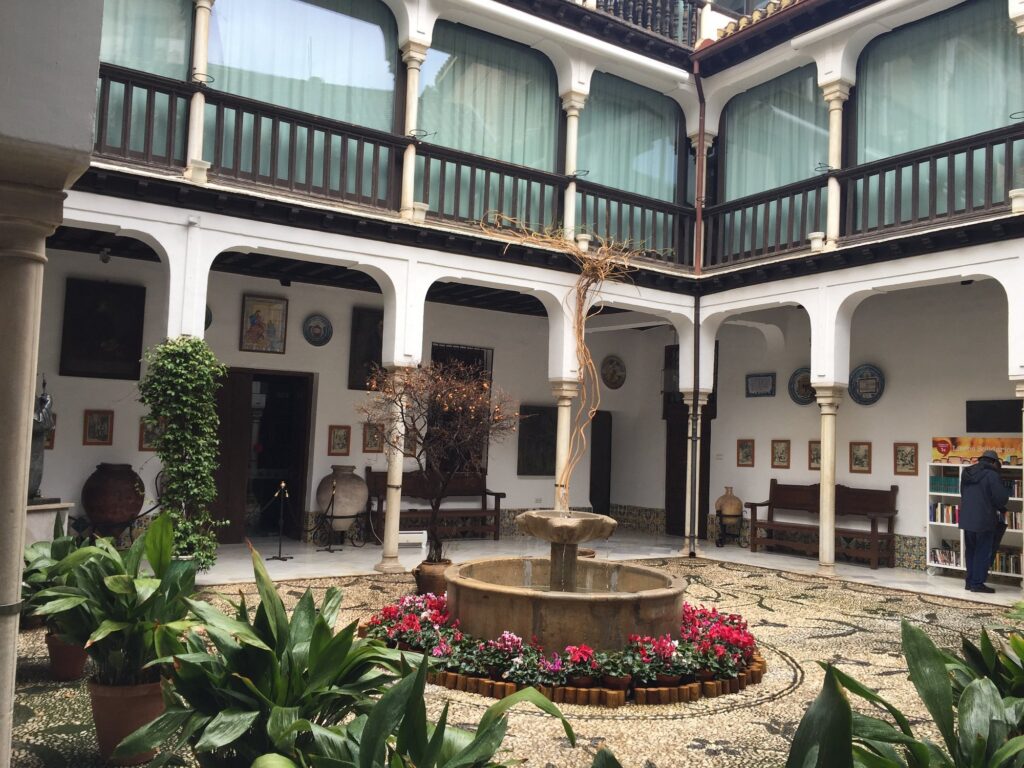
Museum of Fine Arts
This museum in Granada preserves important works of art starting from the 16th century, including pieces by Alonso Cano and Machuca. Especially noteworthy is the sculpture El Entierro de Cristo (The Burial of Christ) by Jacobo Florentino. Other art objects from former convents and churches in Granada can also be admired. Location: Palace of Carlos V. Microbus-Alhambra (C3). Open: Summer (June 15th through September 15th): Tuesday to Sunday 9am to 3pm. Winter (September 15th through June 15th): Tuesday to Saturday 9am to 6pm. Sunday and bank holidays 9am to 3pm. Admission is free for for EU nationals. Other countries: 1,5 euros.
Telephone: 958563508. Visit website.
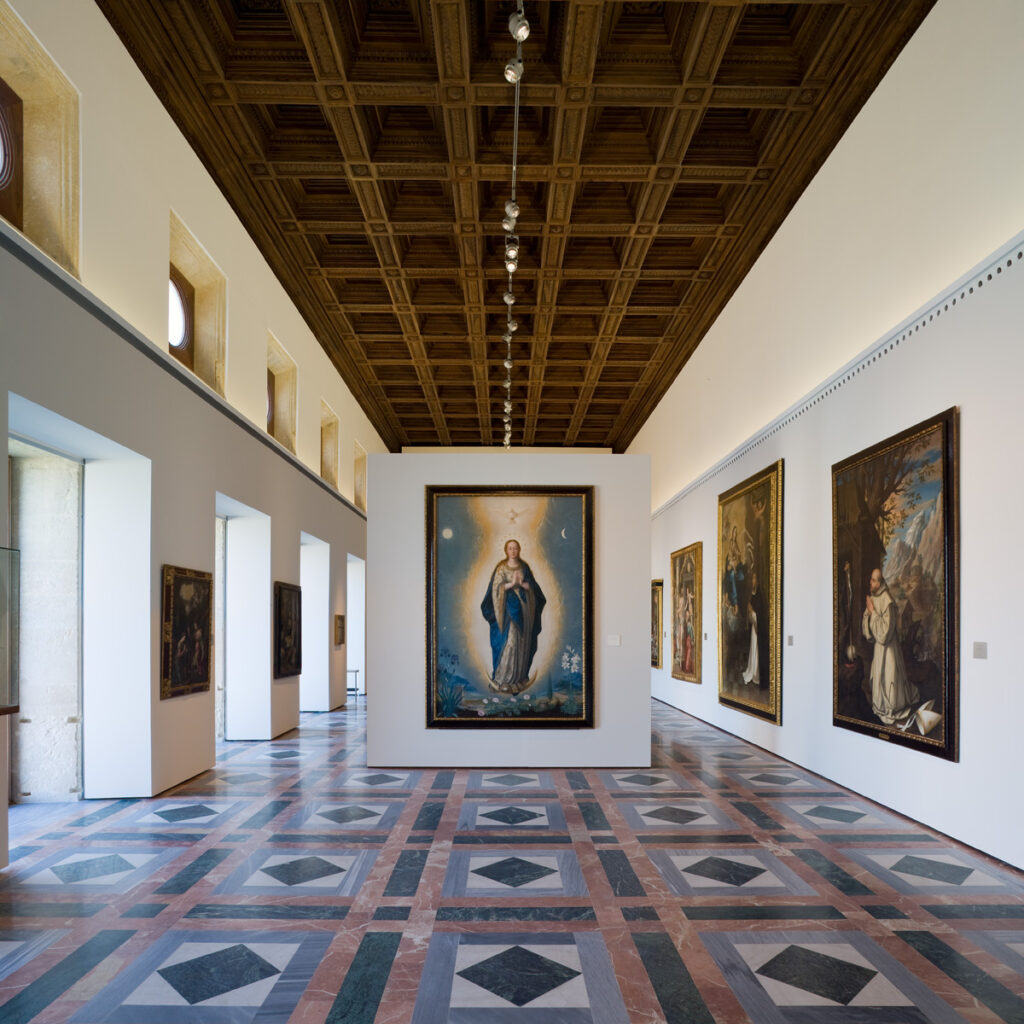
Museo Sacristía de la Capilla Real (Royal Chapel Museum)
The Royal Chapel is part of the monumental complex that includes the Cathedral of Granada, the protrusion of the former Exchange, and the Sagrario church, in the heart of the city’s historic center. This Granada museum houses important works of great historical and artistic value, including the crown and scepter of Queen Isabella and a priceless collection of panels from the Flemish School, a gift from the Queen to Granada. Cathedral. Buses 3, 4 & 8.
Open: Monday to Saturday 10:15am to 1:30pm and 3:30pm to 6:30pm. Sunday 11am to 1:30pm and 2:30pm to 5:30pm. Admission is 4 euros. Buy your tickets online in their website.
Telephone: 958 22 78 48.

Archeological Museum
The Archaeological and Ethnological Museum of Granada (MAEGR) is located in the Casa de Castril, a stately 16th-century house. Its collection, structured on two levels around a beautiful Renaissance courtyard, encompasses archaeological findings from the Paleolithic and Neolithic periods made in the province of Granada, as well as Iberian, Phoenician, Roman, and Arab pieces of notable value.
Location: Carrera del Darro, 41.
Microbus-Albaicín. Open: Summer (June 16th through September 15th): Tuesday to Sunday 9am to 5pm. Winter (September 16th through June 15th): Tuesday to Saturday 9am to 9pm. Sunday and bank holidays 9am to 3pm. Admission is free for EU nationals, other countries 1,5 euros. Telephone: 958 034666. Visit website.
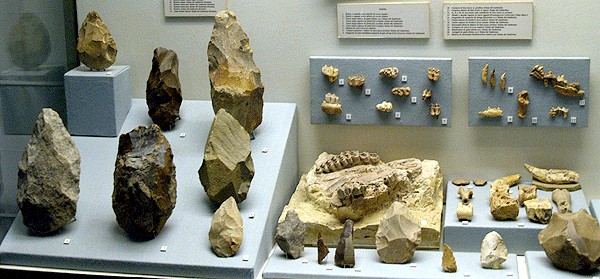
Granada Science Park
Almost 300 interactive exhibits involving electricity, light, sound, gravity. astronomy, meteorology and various other natural phenomena. Exhibits include a 50m observation tower, a planetarium, a house of tropical butterflies, a maze, watergardens, an astronomy garden and a 12-meter Foucault pendulum.
Tuesdays-Saturdays from 10am – 7pm. Sundays from 10am to 3pm. Free car park. Entrance fee: €7. Tel: +34 958 131 900 Email: web@parqueciencias.com. See more at our Parque de las Ciencias page. Visit website.
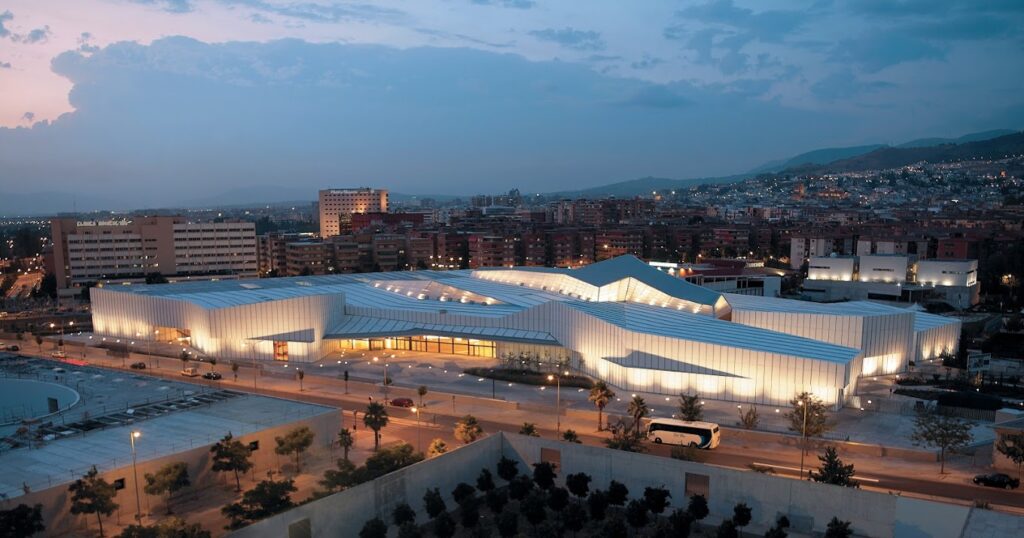
Casa-Museo de Manuel de Falla
The home of Spain’s most influential 20th century composer, Manuel de Falla, has been preserved exactly as it was when he lived there (from 1921 to 1939) – from his piano on which he composed his masterpieces right down to the dishes from which he ate his meals. Performances of the composer’s music are occasionally performed on the premises. Open: Winter (October through May): Tuesday to Saturday 10am to 5pm, Sundays 10am to 3pm. June and September: Tuesday to Sunday 9am to 2:30pm. July and August: Tuesday to Saturday 9am to 2:30pm. Closed on Monday, Sunday and bank holidays in July and August and on Monday and bank holiday the rest of the year. Admission fee is 3 euros. Address:
Museo Manuel de Falla, Paseo de los Mártires. Telephone: 649055947. Visit website.
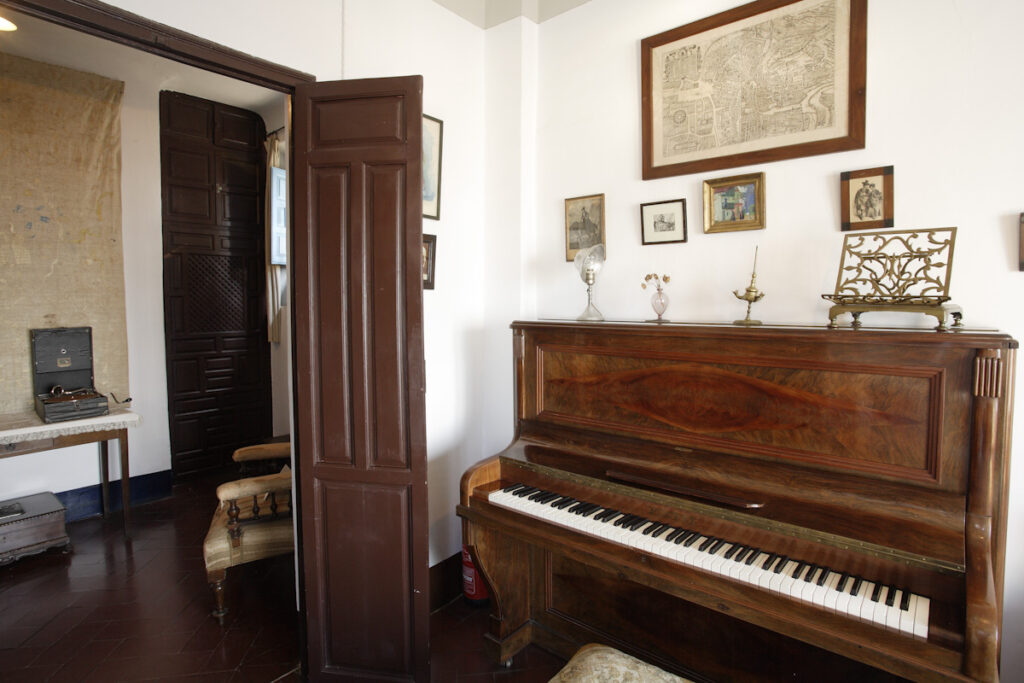
Museo Caja Granada Memoria de Andalucia
A museum dedicated specifically to the history and culture of Andalusia. There are four main areas, each with a different theme. Area one is dedicated to geographical diversity. Area two is about land and cities. The third area deals with lifestyle. The fourth area is concerned with art and culture. The exhibit descriptions and videos are in Spanish and English.
Avenida de la Ciencia, 2, 18006 Granada. Tel: 958222257. Open: Tuesday, Wednesday and Thursday: 9:30am – 2pm, Friday 9:30am to 2pm and 5pm to 7pm, Saturday 10:30am – 2pm. Closed on August. Admission fee is 5 euros. Visit website.
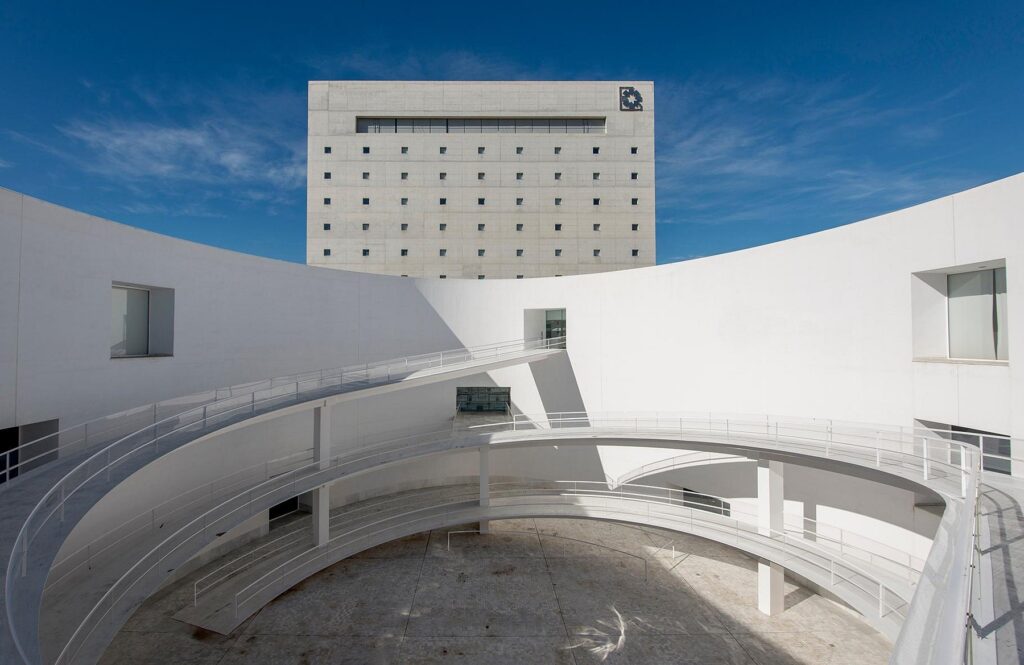
Centro de Arte José Guerrero
Located in the heart of Granada, next to the Cathedral, the Centro de Arte José Guerrero stands as a beacon of contemporary art in Andalusia. Named after the renowned Spanish abstract painter José Guerrero, this museum celebrates his life and works while also showcasing a diverse range of contemporary art exhibitions.
The museum itself is housed in a striking modernist building, designed by architect Antonio Jiménez Torrecillas, which provides a fitting backdrop for the avant-garde artworks it displays. Upon entering, visitors are greeted by a dynamic space that seamlessly blends natural light with clean lines and spacious galleries, creating an immersive and inspiring environment for art appreciation.
The Centro de Arte José Guerrero is dedicated to promoting dialogue and experimentation in contemporary art, offering visitors a chance to engage with thought-provoking exhibitions, workshops, and cultural events. From paintings and sculptures to multimedia installations and performance art, the museum’s ever-changing roster of exhibits reflects the diverse and vibrant landscape of contemporary artistic expression.
In addition to its exhibition spaces, the museum also features a library, archive, and educational programs aimed at fostering creativity and critical thinking among visitors of all ages.
Openign times: Tuesday to Saturday from 10:30a.m. to 2p.m. and from 4:30p.m. to 9:p.m. Sundays from 10:30 a.m. to 2p.m.
Free admission. Free guided tour on Tuesday at 7p.m. (except bank holidays)
Location: calle Oficios, 8, Granada. Telefono: 958 220 109 / 958 220 119. Email: info@centroguerrero.es
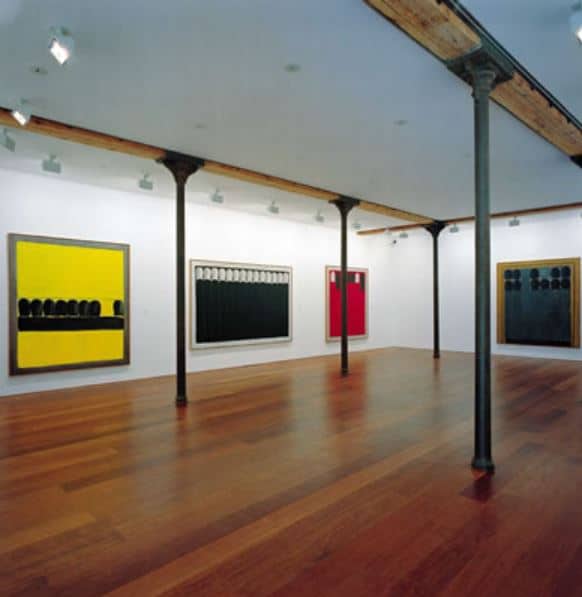
Museo Cuevas del Sacromonte
The Museo Cuevas del Sacromonte offers a captivating journey into the heart of Granada’s rich cultural heritage. Nestled in the picturesque Sacromonte neighborhood, famous for its cave dwellings and flamenco tradition, this museum provides a fascinating insight into the lives and history of the gypsy community that have inhabited these caves since XVI century.
Visitors can explore a series of 11 restored caves, each showcasing different aspects of traditional gypsy life, from housing and craftsmanship (basketry, forge, ceramics, loom) to music and dance. Exhibits feature authentic artifacts, tools and photographs offering a comprehensive look at the vibrant culture that thrived in this unique setting.
The Sacromonte Museum also has a Nature Classroom that provides information about the flora and fauna, climate, landscape, and agriculture of the area.
In addition to its cultural exhibits, the museum also hosts live flamenco performances, providing visitors with an immersive experience of this iconic Spanish art form. Find out more at our Sacromonte Caves Museum page and book your ticket.
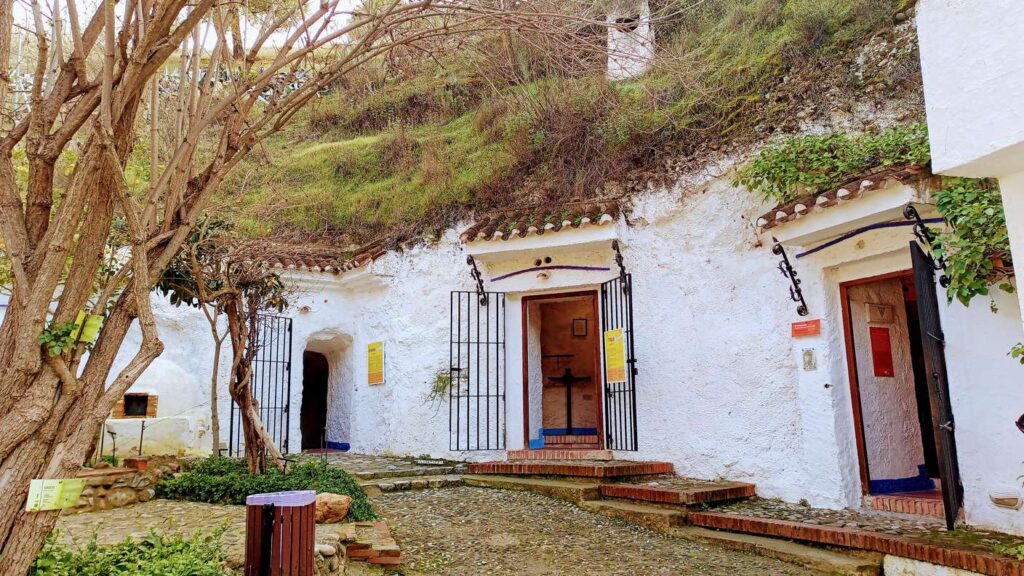
Casa de Zafra - Centro de Interpretación del Albaicín
Casa de Zafra, nestled in Albaicín neighborhood is one of the finest examples of domestic architecture from the Nasrid period, making it one of the best-kept treasures of the Albaicín. This meticulously restored 14th-century Nasrid house offers a glimpse into Granada’s Moorish and Spanish heritage, with intricate stucco work, carved wooden ceilings, and serene courtyard gardens.
Within Casa de Zafra, the Centro de Interpretación del Albaicín illuminates the neighborhood’s evolution from its Moorish origins to a UNESCO World Heritage site. Through interactive exhibits and multimedia presentations, visitors explore the Albaicín’s architectural legacy and cultural significance.
From ancient Moorish fortifications to whitewashed houses and winding alleys, Casa de Zafra showcases the Albaicín’s vibrant past and dynamic present. As visitors engage with exhibits on urban development and cultural preservation, they gain a deeper understanding of the neighborhood’s enduring charm and cultural significance.
A visit to Casa de Zafra and the Centro de Interpretación del Albaicín promises an immersive experience in Granada’s historic heart, where past and present intertwine to captivate the imagination.
Location: C. Portería Concepción, 8, Albaicín, 18010 Granada
Open: Winter: from October 15th to March 14th: from Tuesday to Saturday 10am – 2pm / 4pm – 7pm, Sunday: 10am – 2pm. Summer: from March 15th to October 14th: from Tuesday to Saturday 9:30am – 1:30pm / 5pm – 8pm, Sunday: 9:30am – 1:30pm. Admission fee: 3 euros. Free entry on Sundays.
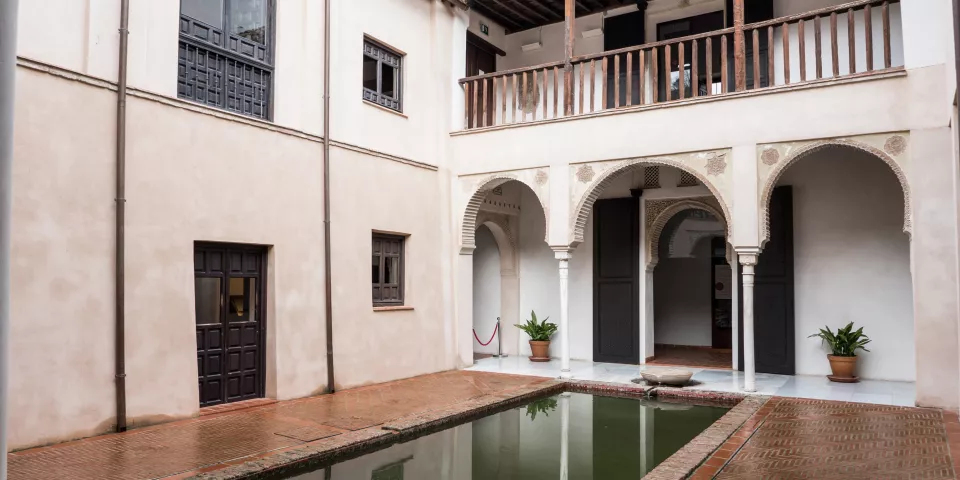
Carmen de los Geranios: Casa Museo Max Moreau
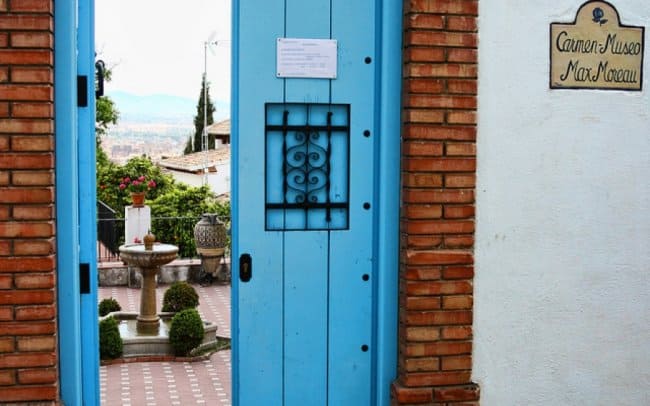
If you’re exploring the Albaicín neighborhood in Granada, be sure to visit the Max Moreau House Museum at Carmen de los Geranios, near the Mirador de San Nicolás. This charming municipal museum once served as the home of Belgian artist Max León Moreau, who, in his later years, donated his legacy to the city. The museum, housed in a traditional “Carmen” – a unique type of Andalusian house with gardens – offers a fascinating glimpse into Moreau’s artistic life and his connection to the city. The property, which combines a dwelling and terraced gardens, features a fig tree, rose bushes, geraniums, and a small pool, creating a serene atmosphere that blends nature with culture. Explore the museum’s three interconnected buildings: the exhibition hall showcasing Moreau’s works and those of guest artists, the artist’s personal library filled with his books and literary works, and his preserved studio, complete with personal mementos like his piano and oriental artifacts. Visiting this intimate space is a captivating journey through Moreau’s life and legacy in the heart of Granada.
